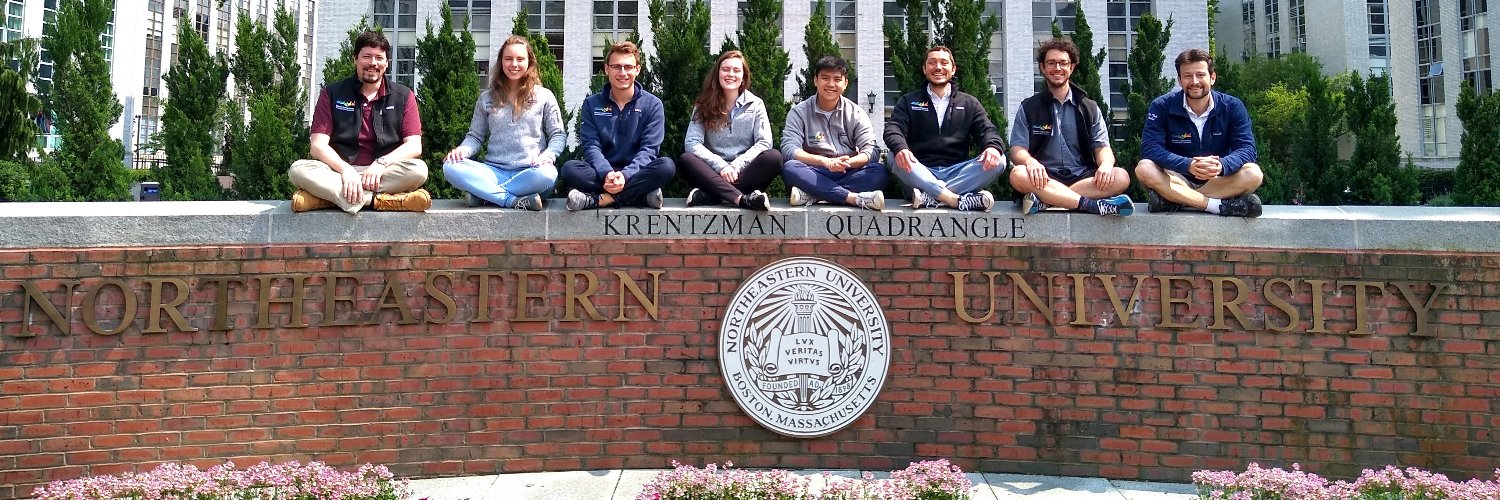
Slavov Laboratory
@slavovLab
We seek principles in the coordination among protein synthesis, metabolism, cell growth and differentiation PI: @slavov_n Videos: http://youtube.slavovlab.net
We report many proteins not predicted by the genetic code. They are stable & abundant O( 10³ ) copies / cell. Generative mechanisms include codon-anticodon mismatches & RNA modifications. Their abundance depends on codon frequency & protein stability. biorxiv.org/content/10.110…
We need throughput, yes: go.nature.com/3sphmIA We also need high intellectual input. “𝑯𝒊𝒈𝒉 𝒊𝒏𝒑𝒖𝒕, 𝒉𝒊𝒈𝒉 𝒕𝒉𝒓𝒐𝒖𝒈𝒉𝒑𝒖𝒕, 𝒉𝒊𝒈𝒉 𝒐𝒖𝒕𝒑𝒖𝒕 𝒔𝒄𝒊𝒆𝒏𝒄𝒆” nikolai.slavovlab.net/high-throughpu…
Eukaryotic ribosome biogenesis youtube.com/watch?v=ETkwf6…
Cells size variation is often an important factor to consider when thinking about the biological scales & mechanisms. It's also a relevant technical factor when analyzing omics data nature.com/articles/s4159…
Cell size varies by many orders of magnitude. The mechanisms that generate and maintain this extraordinary diversity of sizes remain incompletely understood.
Last week, I talked about technological progress in single-cell proteomics & the biological analysis that it enables: 𝐒𝐢𝐧𝐠𝐥𝐞-𝐜𝐞𝐥𝐥 𝐩𝐫𝐨𝐭𝐞𝐨𝐦𝐢𝐜𝐬: 𝐅𝐫𝐨𝐦 𝐏𝐫𝐨𝐭𝐞𝐢𝐧 𝐕𝐚𝐫𝐢𝐚𝐭𝐢𝐨𝐧 𝐭𝐨 𝐁𝐢𝐨𝐥𝐨𝐠𝐢𝐜𝐚𝐥 𝐅𝐮𝐧𝐜𝐭𝐢𝐨𝐧𝐬 youtu.be/8nhjKSTqeOs?si…
𝐓𝐨 𝐮𝐧𝐝𝐞𝐫𝐬𝐭𝐚𝐧𝐝 𝐭𝐡𝐞 𝐛𝐫𝐚𝐢𝐧, we need to understand what shapes its molecular composition. What are the contributions of protein synthesis and degradation rates to determining protein abundance in the brain ? biorxiv.org/content/10.110…
A succinct and clear presentation of multiplexing proteomic technologies that we developed at @ParallelSqTech.
The talk by Dr. Kevin McDonnell at #SCP2025 is on YouTube: JMod: Joint modeling of mass spectra for enhanced multiplexing in the mass and time domains youtu.be/qgqloCJJa1M?si…
We developed multiple interdependent technologies. Together, they are opening up new opportunities: parallelsq.org/blog/proteomic…
Leading these (and many ongoing) projects has been demanding, exhilarating & rewarding. They required highly coordinated collaborations among diverse experts within PTI, MIT, MGH and beyond. 1/2
This week, we published 4 preprints reporting: 1⃣ New new approaches for multiplexing & de-multiplexing proteomic data. 👉 Together, they scale throughput while preserving depth & accuracy. 2⃣ Protein degradation dysregulation in Alzheimer's 🧵 parallelsq.org/blog/proteomic…
Alzheimer's disease (AD) is associated with numerous proteome changes. We find large & consistent decrease in the abundance and stoichiometry of 20S proteasome subunits. ⬛️ It leads to abnormal accumulation of 20S substrate proteins. biorxiv.org/content/10.110…
We performed global and systematic proteome analysis of Alzheimer's disease (AD). Our results suggest that decreased ubiquitin-proteasome system capacity and impaired clearance of proteins contribute substantially to proteopathic burden in AD. biorxiv.org/content/10.110…
We just released JMod: an open source software supporting multiplexed DIA. It supports parallelization in both the mass domain (plexDIA) using small mass offsets and in the time domain (timePlex). It enabled 27-plex DIA & much further scaling 🚀 biorxiv.org/content/10.110…
Increasing throughput in mass spec proteomics requires new ways to model the increased complexity of the spectra. To model highly multiplexed mass spectra, we developed JMod. JMod enables new multiplexing approaches in the time and mass domains. biorxiv.org/content/10.110…
Multiplexed proteomics is getting a big boost 🚀 It's not just speed & scale ... It's also data quality, depth, rich spectra improving de novo sequencing & accurate quantification. biorxiv.org/content/10.110…
Proteomics needs to be not only specific & accurate but also faster & cheaper. To enable all of these, we introduce 9-plex PSMtags. PSMtags parallelize DIA analysis of samples & proteins. ⬛️ They also improve sequencing. biorxiv.org/content/10.110…
I am very enthusiastic for improving fragmentation spectra & the research this empowers. This means increasing the sensitive and scope of sequencing the immunopeptidome ==> better cell therapies. biorxiv.org/content/10.110… 1/2
PSMtags boost b-ion production, enhance de novo sequencing, and enable 9-plexDIA—without sacrificing quant accuracy.
~ 30,000 protein data points / run from single-cell level proteomes is a boost for the field ! It's exciting to think of the capabilities afforded by these scalable approaches.
📊 Using stable isotopes of C/N/O, PSMtags increased protein datapoints from 4,340 (label-free) to 28,359 in the same time. We demonstrate 240 samples per day, but over 1,000 are possible with shorter runs. That’s millions of protein data points per day.
We are excited to introduce ‘time’ as a new domain for proteomics multiplexing! It enables: -Label-free multiplexing -Combinatorial multiplexing with plexDIA Using 9-plexDIA and 3-timePlex together we demonstrate 27-plex DIA 🚀 biorxiv.org/content/10.110…
A new dimension for multiplexing mass spec analysis -- time -- is enabling scaling up throughput at new levels. We demonstrate 27-plex DIA enabling over 500 samples / day. We project that timePlex will enable throughputs exceeding 1,000 samples / day. biorxiv.org/content/10.110…
We are excited to introduce ‘time’ as a new domain for proteomics multiplexing! It enables: -Label-free multiplexing -Combinatorial multiplexing with plexDIA Using 9-plexDIA and 3-timePlex together we demonstrate 27-plex DIA 🚀 biorxiv.org/content/10.110…
Andrew Leduc talks about quantifying regulatory mechanisms in a mammalian tissue at single-cell resolution.
We are live streaming #SCP2025 youtube.com/live/zJHoftV7M…
A highlight of our recent research article by @_AndrewLeduc et al. azolifesciences.com/news/20250519/…

𝐓𝐨 𝐮𝐧𝐝𝐞𝐫𝐬𝐭𝐚𝐧𝐝 𝐭𝐡𝐞 𝐛𝐫𝐚𝐢𝐧, we need to understand what shapes its molecular composition. What are the contributions of protein synthesis and degradation rates to determining protein abundance in the brain ? biorxiv.org/content/10.110…
What is new in proteomics ? In recent years, proteomics has made remarkable progress. Here is an accessible overview: blog.slavovlab.net/2025/05/10/wha…
Single-cell proteomics is gaining momentum. It can analyze the proteomes of ~ 1,000 single cells / day, and we need to ensure high quality cell isolation and sample preparation: ⬛️ These approaches can help: nature.com/articles/s4146…
